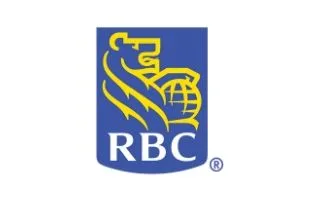When setting up a business in Canada, you will need to determine the right business structure. To select the right business structure, you first need to consider the risks and benefits of each business type — as well as the time and cost involved. To help, here is a simple guide to explain the difference between each business structure, in Canada, along with some advantages and disadvantages of each type.
What are the 4 types of business structures in Canada?
| Business structure | Highlights | Ownership | Liability | Type of tax filing |
|---|---|---|---|---|
Sole proprietorship
| Simple to set up; limited paperwork | 1 owner | Owners are personally liable | Personal tax return (T1) |
Partnership
| Best for testing new ideas with other business owners Includes:
| 2+ owners | General partnerships:
Limited Partnerships and Limited Liability Partnerships (LLPs):
| Partnerships can be formed by joining two or more people, corporations, trusts or partnerships, so the type of tax filing varies:
|
Corporation
| Best for scaling businesses and protecting personal assets from legal liability Includes:
| 1+ owners | Business is liable | Corporate tax return (T2) |
Cooperative
| Best for people who share similar social or economic needs and who want to operate a business democratically. In Canada, all cooperatives must be incorporated. | 1+ owners | Limited depending on members’ specific roles (and other factors) as outlined in either federal or provincial legislation depending on how the co-op is incorporated:
| Depends on whether the cooperative is classified as a for-profit, not-for-profit or charity under the federal Income Tax Act:
|
 How a sole proprietorship works
How a sole proprietorship works
A sole proprietorship is a business run by one person where there is no legal difference between the owner and the business. This means you’re responsible for all debt or legal actions taken against the business.
How to set up a sole proprietorship
If you plan to run a sole proprietorship, you have to register your business with the province or territory in which you’ll be operating. The only exception is if you plan to run a business under your own first and last name (e.g. “Reggie Wilson’s window repairs “), in which case, you don’t have to register so long as you live in BC, Saskatchewan, Manitoba, Ontario, Quebec, New Brunswick, Nova Scotia, PEI, the Northwest Territories or Nunavut.
Even if your business is registered, keep in mind that there’s legally no difference between you and your business.
Remember to apply for licenses and permits
While there’s not a separate business structure for your business, you’re still required to apply for licenses and permits for your business. For example, you need a license from the Alcohol and Gaming Commission of Ontario if you’re starting a one-man brewery in Ontario. Otherwise, you risk facing a lawsuit or getting shut down.
How taxes work
Sole proprietors report all business income and expenses on their personal tax return (T1) using form T2125. They can deduct eligible business expenses like office supplies and vehicle costs to reduce taxable income, but must also pay both the employer and employee portions of Canada Pension Plan (CPP) contributions.
If annual revenue exceeds $30,000, they’re required to register and collect GST/HST, filing returns and remitting the tax collected.
While sole proprietors have until June 15 to file, any taxes owed must be paid by April 30. And, those who made more than $3,000 (or $1,800 in Quebec) the previous year may need to make quarterly installments.
Pros and cons of sole proprietorships
- Complete control over business and profits
- Only pay personal income tax, not business income tax as well
- No or low-cost to form
- Fully responsible for debt and lawsuits
- Hard to get funding
- You’re responsible for all the work
Open a business bank account
One way to help separate your personal finances from your business finances is to open a separate business bank account. Here are some of our top picks, but you can read our full guide to business bank accounts to learn more.

- Low $6 monthly account fee
- Unlimited online transactions
- Unlimited mobile and ATM cheque deposits
- Sole proprietorships and corporations accepted

- $500 sign-up offer
- Multi-currency global accounts
- FX & payout to 150+ countries
- For registered Canadian corporations only

- USD, GBP, EUR accounts
- Multi-currency credit card
- Pay bills in 37 currencies
- Avoid FX fees
- For registered Canadian corporations only
Setting up bank accounts for your business
Whether a sole proprietor or a corporation, one key task in setting up your business is to decide on the right bank account and services your company will require. In most cases, opening a business bank account will be sufficient; however, for businesses with more needs, you may need to consider other banking products and services, such as cheques, international deposits and payments, as well as access to business credit.
 How a partnership works
How a partnership works
A partnership is a business owned by two or more people, corporations, trusts or partnerships (yes, partnerships can join to form another partnership). All owners split control of the business — and share its profits and losses. There are several different types of partnerships:
- General partnership. All owners manage the business together and split the profits and losses. They’re legally liable for all debts and legal actions taken against the business.
- Limited partnership. A general partner manages the business and other “limited” partners provide funding, but don’t have their hands in day-to-day operations and aren’t liable.
- Limited liability partnership (LLP). Several general partners manage the operations of the business, but are legally protected from each other’s actions. How it works can vary by province.
How to set up a partnership
You can form a partnership by registering with your province or territory and writing up a partnership agreement. While not required, a partnership agreement outlines the terms and conditions of the partnership.
It should state the responsibilities of each partner, outline what types of roles each partner plays in day-to-day operations and describe how profits are split. It should also outline how the partnership deals with certain situations. Otherwise, it’s up to provincial law.
A partnership can be dissolved if one or more of the partners notify all the other partners of their intent to leave. A partnership can automatically dissolve if it was formed for a fixed term or to complete a specific project and the term expires or the project is completed.
How taxes work
Partnerships don’t pay income tax directly. Instead, they calculate their total income and then allocate profits or losses to each partner based on the partnership agreement.
A partnership may also have to file an information return (form T5013) if it has more than 5 members, is a tiered partnership (meaning one of its partners is in another partnership) or is specifically asked by the CRA.
Each partner then reports their share on their own personal or business tax return and is taxed at their applicable rates.
Pros and cons of partnerships
- Flow-through taxation
- Potentially more initial capital to get up and running
- Shared work and responsibilities
- Joint liability for debts
- Sharing profits
- Less individual control over business affairs
- Possible disagreements
Why do some business structures require personal tax returns?
Unlike a corporation, a sole proprietorship is not considered a separate legal entity from its owner. The owner (or sole proprietor) is the business. Business revenue is therefore reported on the owner’s personal tax return.
In Canada, a partnership is considered a “flow-through entity,” which means the partnership itself is not taxed on the income it receives. Rather, it passes income on to its owners, who are charged income tax. This is to avoid “double taxation,” where both the business entity and its owners are charged income tax on the same revenue.
 How a corporation works
How a corporation works
A corporation works by completely separating legal liability from its owners — in fact, it’s its own legal entity. Corporate profits are divided between shareholders based on the percentage of the company they each own, but shareholders aren’t liable for a corporation’s debts.
Each shareholder gets one vote per share they own on major company decisions. The original owners — or shareholders — can eventually sell off the corporation to another set of shareholders by “going public.”
A corporation will exist forever if a firm end date hasn’t been decided. This means that the corporation can continue to operate despite any change in status, ranging from the disbanding of directors, the death of the owner or the sale of the company. A corporation can be dissolved if it amalgamates with another company, goes into bankruptcy or is ended by its members.
Once a corporation is liquidated and all assets are sold, any outstanding debts are paid and the rest is split between the shareholders.
How to set up a corporation
Corporations involve a greater amount of paperwork compared to other types of business structures, though exact requirements can vary depending on where you live.
Generally, you must file articles of incorporation with your province or territory, sell stock to the new company’s shareholders and elect a board of directors. The board of directors is responsible for coming up with the business plan and the general management of the corporation.
Corporations are often required to report company standings in the form of quarterly or annual financial statements.
Types of corporations
There are a few types of corporations that work differently — mostly when it comes to taxes:
- Canadian-controlled private corporation (CCPC). These businesses are based in Canada, predominantly controlled by Canadian residents and not listed on any stock exchange. The reason for these tight requirements is that CCPCs have a lot of tax advantages and are really meant to provide a way for private individuals, families and groups to manage their assets.
- Other private corporation. This category encompasses any privately-owned companies that aren’t classified as CCPCs.
- Public corporation. Public corporations are traded on a stock exchange. Anyone can get a controlling interest in a company by purchasing its shares. Public corporations can own other private corporations, which are known as their subsidiaries.
- Crown corporations. These are wholly owned by the federal or provincial governments but are structured and run like private corporations. These include the Bank of Canada, Canadian Council for the Arts, Canada Post Corporation, Royal Canadian Mint and VIA Rail Canada Inc, among many other companies.
How do taxes work?
A corporation is a separate legal entity, so it files its own corporate tax return (T2) and pays taxes on its profits at the corporate tax rate, which varies by province and corporation type.
CCPCs benefit from the small business deduction, which reduces the federal tax rate on the first $500,000 of active business income and may qualify for additional tax credits and grants.
Crown corporations are often exempt from federal or provincial taxes, with profits returned to the government or reinvested.
Pros and cons of corporations
- Personal protection with limited liability
- Easier to raise capital and get financing
- Perpetual entity until liquidated
- Lengthy and expensive process to become incorporated
- Possible double-taxation
- Tightly governed
 How a cooperative works
How a cooperative works
Cooperatives can be formed by people who share a common interest in an enterprise such as a residential community, credit union or investment firm. Those who participate in a cooperative are its members and have varying roles. The exact type of role determines a member’s level of liability as outlined by the federal or provincial legislation by which the cooperative is governed (see “How to set up a cooperative” below).
There are 8 different categories into which cooperatives can fall:
- Housing. Individually-owned or collectively-owned units
- Consumer. Banking, food, gas, telecommunications, child care, retail etc.
- Investments. Avoids investing in unfamiliar businesses on large, prominent stock exchanges in favour of investing in local business interests.
- Community service. Usually supports a social aspect of the community, such as recreation facilities and community centres.
- Multi-stakeholder. Allows people with multiple skill sets or interests (building, financial management, scientific research etc.) to unify in pursuit of a common business goal.
- New generation. Mostly used to infuse agricultural businesses with large capital investment and stabilize the price of agricultural products.
- Producer/marketing. Helps producers benefit from economies of scale through group purchasing, access to member resources and the ability to promote a larger, more unified brand.
- Worker. Employees own the cooperative, making it easier to fill in leadership gaps left by retiring business owners. Sometimes used as an alternative to partnerships.
How to set up a cooperative
Cooperatives must be incorporated, which can be done at either the federal or provincial level. Federal cooperatives are governed by the Canada Cooperatives Act and are formed by filing an application with Corporations Canada. One of the main benefits of incorporating federally is that it allows cooperatives to operate in multiple provinces and territories.
To incorporate at the provincial level, you must file with your province or territory’s appropriate corporate office. Each province and territory has its own legislation governing the formation of co-ops, distribution of liability and other matters. Check out Canada.ca for more information.
How taxes work
Cooperatives can be set up as for-profit, not-for-profit or even charitable entities. The type of tax return that must be filed depends on which entity the cooperative has chosen.
For-profit and not-for-profits must file a T2 Corporation Income Tax Return, but patronage dividends or refunds paid to members are generally deductible to the co-op and taxable to the members, which helps reduce corporate-level taxation.
Charitable co-ops must file a T3010 Registered Charity Information Return and are generally exempt from income tax on charitable activities.
Pros and cons of cooperatives
- Higher managerial accountability
- Allows individuals to pool resources and achieve business goals
- Limited liability based on members’ roles
- Governing laws can be complex and varied
- Less structured than other types of businesses
- Cumbersome managerial processes
How to choose a business structure
1. Assess your business needs
Before choosing a business structure, consider your goals and circumstances. Think about how much personal liability you’re willing to assume, whether you want full control or are open to sharing decision-making and how your choice will affect taxation.
You should also consider whether you’ll need external funding, how you plan to grow your business and whether a more complex structure is justified by your long-term goals. This is important because different business structures affect your ability to raise capital, attract investors and manage growth efficiently.
2. Evaluate the pros and cons
Each business structure has advantages and disadvantages. Sole proprietorships are simple to set up and give the owner full control, but the owner is fully liable for debts.
Partnerships allow pooling of resources and shared responsibilities, but partners also share liability, and disagreements can occur.
Corporations offer limited liability and potential tax advantages, but they’re more complex and costly to set up and maintain.
Cooperatives provide member control and some tax benefits, but they require active member involvement and may be more administratively complex.
3. Consider legal requirements and tax implications
Different business structures have different legal obligations. For example, corporations and cooperatives must be incorporated either federally or provincially, while sole proprietorships and partnerships may only need provincial registration depending on your location.
Tax implications are different for each business structure as well. Sole proprietors and partners report business income on their tax returns, while corporations and some cooperatives pay corporate tax.
Understanding the legal and tax obligations for each structure can help you choose one that minimizes your tax burdens and prevents costly compliance issues later.
4. Plan for growth and financing
Think about how you want your business to expand in the future and whether your chosen structure can support it.
Corporations generally make it easier to raise capital from investors or banks, while sole proprietorships and partnerships face limitations.
If you plan to scale, enter multiple provinces or attract outside investors, a structrue with clear governance and liability protections may be more suitable.
Bottom line
Consider your legal responsibility, tax obligations and the work it takes to set up and maintain different business structures before you decide which one to choose. For most businesses just starting out, a sole proprietorship will be a good fit, at least for the first while as the business starts to grow. Then, as time goes and your business grows, you may need to reassess and register your business in a more suitable structure.
Frequently asked questions
Sources
More guides on Finder
-
Float Financial review
How does Float Financial for business work and is it legit? Find out in this review.
-
Best online banking for businesses in Canada
How to choose an online business bank account in Canada and manage your money digitally.
-
Business banking services: Banks and fintechs compared
From chequing accounts to credit cards and global transfers, here’s how to find the best business banking service.
-
EQ Bank Business Account review
A detailed look at the features and fees of the EQ Bank Business Account.
-
Best business bank accounts in Canada
Explore our top picks for the best business bank accounts in Canada.
-
How to start a dog-walking business in Canada
Learn the key licensing, insurance and legal steps for starting a dog-walking business in Canada.
-
Setting up a window cleaning business
Learn about permits, business structures, banking, pricing and marketing to start a window cleaning business.
-
How to set up a photography business in Canada
Learn how to launch a photography business in Canada with clear steps, tools and strategies.
-
How to start a cleaning business
Learn how to launch and grow a cleaning business, from licensing and banking to marketing.


